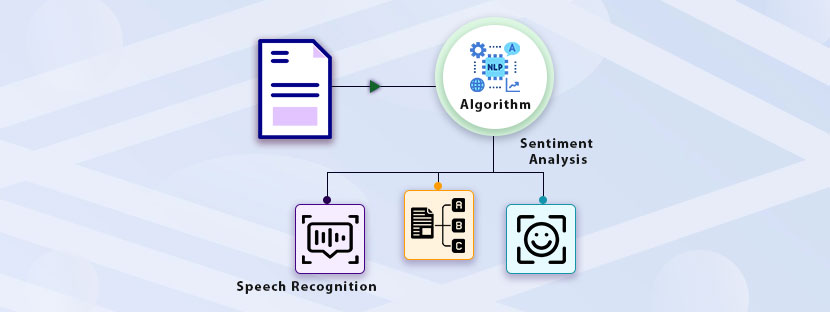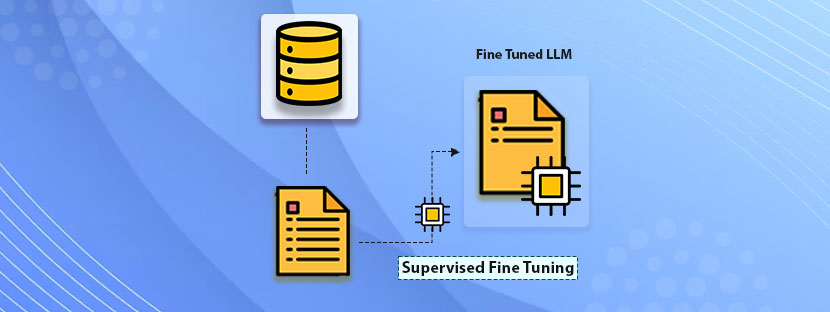In This Article
Humans train machines on how to handle tasks. Think about when parents introduce the world to their babies. Likewise, the human in the loop approach trains machines and develops strong AI systems.
Like a parent or a teacher, humans help the AI system to learn real-world matters. Thus, after training, they can perform tasks like human beings. For example, AI can drive cars, perform analytics, automate manual tasks, and most profoundly, help humans in making decisions. It’s like developing a system by humans, for humans.
Let’s explore more about this concept in this comprehensive blog.
Get it started with the basics!
What is human in the loop approach in ML?
Human in the loop, or HITL, is primarily an approach to put human oversight into the development of Artificial Intelligence or Machine Learning (ML) models.
The application of HITL is widely seen in the development of computer vision technology, LLM (Large Language Models) development, NLP (Natural Language Processing), and other processes. Basically, humans are kept “in the loop” to validate data and make decisions to teach the machine.
The involvement of humans in the development of AI technology depends on various factors. In most cases, the involvement of humans in the development is limited to a certain period only. Whereas some development process requires human support up to a certain level of depth. Humans or the experts train AI and ML models through the following methods;
⤷ Data Annotation
⤷ Model Validation
⤷ Data labeling
⤷ Sharing Feedback & Recommendations
Examples of human in the loop approach
With the help of human-in-the-loop methods, various advanced technologies have been developed so far. Here are the common examples of human-in-the-loop systems that we check;
➪ Chatbots: For basic customer support, there is nothing better than chatbots. Garner also predicted that chatbots will grow more in the next five years. The chances of chatbots getting the primary role in customer service are increasing. However, chatbots are capable of handling general customer queries only. For complex customer queries, human agents take over the case.
➪ Self-Driving Cars: Human-in-the-loop approach is the key method behind the development of computer vision technology. This technology is helping develop self-driving cars. These cars do not need human instruction to drive on the roads. It takes care of the traffic and other rules like a human driver does.
➪ Medical Diagnostic System: The tasks of doctors reviewing and validating chest reports are now getting done by the AI diagnostics system. The use of this system is widely observed in radiology departments.
How human in the loop approach works
Machines need data to act. Human annotators help machines to organize data and help them to understand the data values. Data experts, per se, humans help machines generate accurate responses to queries. For that, humans properly train the AI system with suitable measures.

To get the proper output, human annotators work closely with the AI system. They are responsible for developing, designing, and monitoring the AI systems. For that, they take the help of a few measures, which are;
➛ Data Labeling: Annotate different sets of databases with appropriate labels or tags. So that machines can read labels and make ideas regarding the object. It’s a detailed process, and human annotators help here for the machine to understand every object.
➛ Fine-tuning: Tweaking the AI models according to the organization’s rules to perform the organization’s specific tasks is the main motto of fine-tuning. It’s a humanized process where experts play with the AI system to make the tuning.
➛ Sentiment Analysis: Annotating human emotions through images, texts, audio, etc, is the main idea of sentiment analysis. Human annotators usually perform the sentiment assessment, i.e., annotate sentiment labels to feed the AI system.
Besides this, there’s a bias reduction process that makes sure the AI system doesn’t count biases while getting the training. Human annotators closely monitor each aspect to check everything.
Human on the loop & human in the loop approach
As discussed before, HITL is a direct method that involves training, validating, and refining AI models with the application of data annotation methods. It involves data labeling, fine-tuning, and other methods. On the other hand, Human on the Loop is a method where humans do not participate in the process directly. They oversee the matter and take up a supervisory mode when interacting. There are a few methods, like anomaly detection, encountering edge cases, etc help supervise the process.
Let’s compare both measures to check which is the most efficient one
| Aspects | Human in the Loop | Human on the Loop |
|---|---|---|
| Nature | Direct | Indirect |
| Role Humans Play | Active participation in the development and refinement of the AI models | Secondary role, which is limited to supervising the model and its preparation for deployment. |
| Method | Labeling, annotating, fine-tuning, sentiment analysis, etc | Real-time observation and monitoring plus quick deployment |
| Use Cases | Model training, error correction, fine-tuning. | Development of critical AI systems. For example, healthcare automation systems |
Benefits of human in the loop approach
HITL is the regular and ongoing model that humanizes the AI system. It’s the most popular method, and the output is quite amazing. That’s the reason the AI developers always preferred to follow this procedure. Let’s have a look at the benefits of this method.
⮞ Accurate Results
Improving the accuracy of the AI model is the main priority. Hence, human annotators oversee all the training datasets and eliminate errors from them. Besides biases, this method also minimizes data biases. Plus, human annotators can constantly generate feedback and improvement strategies for further improvement of the AI system.
⮞ Enhanced Transaparancy
The development of responsible AI systems is the current need of human society. If not, then the AI system can turn into a harmful element gradually. However, to prevent this, human annotators make the training system transparent to everyone. It’s a step towards making of AI system responsible for humans.
⮞ Getting More Biased-Free Results
Machines cannot detect biases, but humans can. Human annotators can understand biases well and thus, they can eliminate them. Moreover, continuous monitoring is possible to reduce biases wherever necessary. This can help develop more ethical AI systems, which are also human-responsive and aware of the current situation.
⮞ Efficient AI Development
Human-assisted AI development can increase the potential of the system to the next level. Human annotators can quickly understand the matter and take the AI development process to the next level. Human annotators can catch mistakes long ago and suggest suitable measures to prevent them. Hence, it can reduce the time as well as the resources that are needed for model training.
Challenges of human in the loop approach for AI development
Like any other method, the development of AI and ML via the human-in-the-loop approach involves challenges, too. Here are a few drawbacks that can appear as you go with the technique. Let’s assess them here.
⇢ Costly Resource
Involving humans in the AI development loop can significantly increase the cost factors. You need to hire people for data annotation and have to keep a team for monitoring the annotation activities continuously. Thus, it’s a matter of cost, which can increase over time. It’s okay for a big company to maintain a team of human annotators for AI development purposes. But it’s challenging for a startup to sustain this.
Currently, big companies that have huge backing and funding are developing AI systems. Small startups are still circling in the loop of research and development.
⇢ Possibilities of Human Errors
Humans are beyond any mistakes. Rather, it’s highly chance for the human annotators to make mistakes while preparing the training data. Plus, human annotators are highly prone to making biases. Hence, without any checks and balances, trusting human annotators for building AI is risky and can be harmful as well.
⇢ Issues in Scaling Up
The development of an AI system needs accurately annotated data in large quantities. As human annotators are deployed to label and annotate the data hence it can take time to deploy. Further, relying on human annotators for developing data annotation can be risky. Because you cannot scale up the process quickly. Human input and feedback implementation can take time.
Why the human in the human-in-the-loop approach is the best for ML & AI

Before we move further into the concept, we need to understand why the “human-in-the-loop” concept appeared and how it came. The craziest thing is that “human-on-the-loop” is still relevant and can confuse the overall things. But among both approaches, human in the loop is the best and popular for the development of AI technology.
From marketing to defense, the applicability of AI technology is extensive, and all are developing. The output of AI is now insanely good. It will improve further in the coming years, too. Due to the development of various methods and techniques, the level of AI development has crossed all its earlier set limits. Human-assisted annotation is taking up all the space for the development of accurate annotation.
The human-in-the-loop approach in AI development is essential for ensuring accuracy and quality. Besides human annotation, there is another process called “automated annotation” quite popular. Well, there are many other things the AI development covers; you can start with the basics of AI development here.










